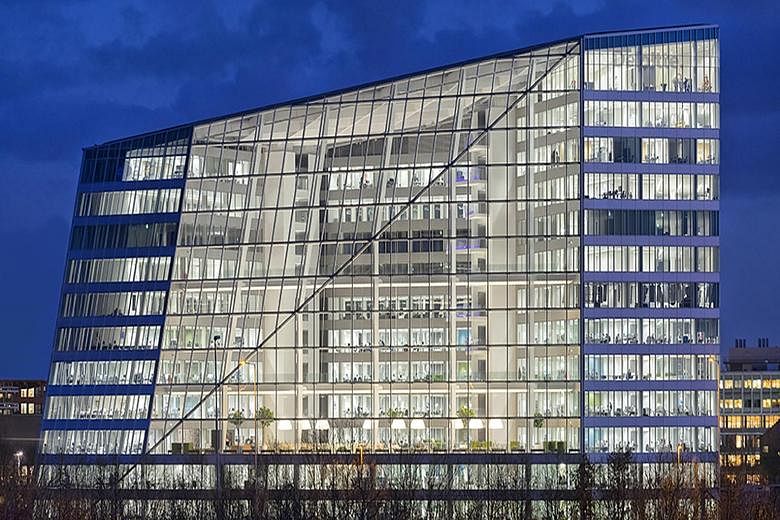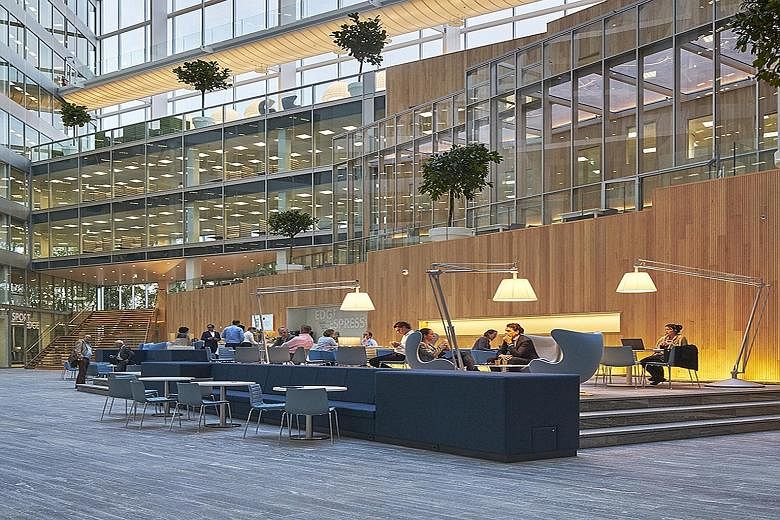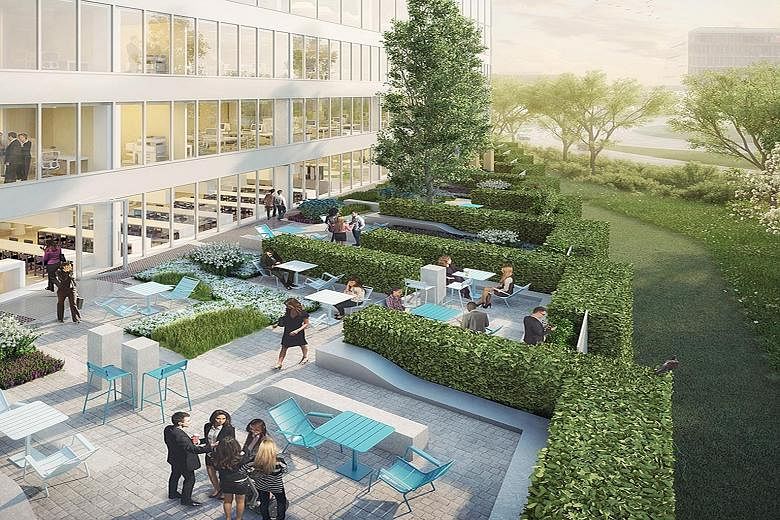AMSTERDAM • It knows where you live. It knows what car you drive. It knows who you are meeting today and how much sugar you take in your coffee - at least it will, after the next software update.
This is the Edge, and it is, quite possibly, the smartest office space ever constructed.
A day at the Edge in Amsterdam starts with a smartphone app developed with the building's main tenant, consulting firm Deloitte. From the minute you wake up, you are connected. The app checks your schedule, and the building recognises your car when you arrive, and directs you to a parking spot.
Then, the app finds you a desk, because at the Edge, you don't have one. No one does. Workspaces are based on your schedule: sitting desk, standing desk, work booth, meeting room, balcony seat or "concentration room". Wherever you go, the app knows your preferences for light and temperature, and it tweaks the environment accordingly.
The Edge is also the greenest building in the world, according to British rating agency Breeam, which gave it the highest sustainability score ever awarded: 98.4 per cent.
The Dutch have a phrase for all of this: Het nieuwe werken, or roughly, the new way of working. It is about using information technology to shape both the way people work and the spaces in which they do it.
It is about resource efficiency in the traditional sense - the solar panels create more electricity than the building uses - but it is also about the best use of humans.
The building of the future necessitated invention. Several stand out. The super-efficient LED panels, made by Philips specifically for the Edge, require such a trickle of electricity that they can be powered using the same cables that carry data for the Internet.
The panels are also packed with sensors - motion, light, temperature, humidity, infrared - creating a "digital ceiling" that wires the building like synapses in a brain.
All told, the Edge is packed with some 28,000 sensors.
"We think we can be the Uber of buildings," says Mr Coen van Oostrom, chief executive officer of OVG Real Estate, the building's developer, referring to the US transport network firm that uses a smartphone app. "We connect them, we make them more efficient and, in the end, we will actually need fewer buildings in the world."
FIFTEEN-STOREY ATRIUM
The atrium is the gravitational centre of the Edge's solar system. Mesh panels between each floor let stale office air spill into open space, where it rises and is exhaled through the roof, creating a loop of natural ventilation. Slight heat variations and air currents make it feel like the outdoors.
The atrium and its iconic slanted roof, which looks from the outside as if a wedge has been sliced off the building, flood the workspaces with daylight, and provide a sound buffer from the adjacent highway and train tracks. Every workspace is within 7m of a window.
"A quarter of this building is not allocated desk space; it's a place to meet," says the architect of the Edge, Mr Ron Bakker, from London-based PLP Architecture.
"We're starting to notice that office space is not so much about the workspace itself; it's really about making a working community, and for people to have a place that they want to come to, where ideas are nurtured."
NEW WAY OF WORKING
About 2,500 Deloitte workers share 1,000 desks. The concept is called hot desking, and it is supposed to encourage new relationships, chance interactions and, just as important, efficient use of space.
Desks are used only when they are needed. Some tiny rooms contain just a lounge chair and a lamp - perfect for a phone call. There are also game rooms and coffee bars with espresso machines that remember how you like your coffee.
Since workers at the Edge do not have assigned desks, lockers serve as home base for the day. Find a locker with a green light, flash your badge, and it's yours.
The smartphone is your passport to the Edge. Use it to find your colleagues, adjust the heating or manage your gym routine. All desks are equipped with built-in wireless chargers, so your phone can keep itself charged.
Mr Erik Ubels, chief information officer for Deloitte in the Netherlands, says there is no doubt that in the future, all buildings will be connected, both internally and to other buildings. "The multibillion-dollar question is, who is going to do it? Whoever is successful is going to be one of the most successful companies in the world."
BLOOMBERG



